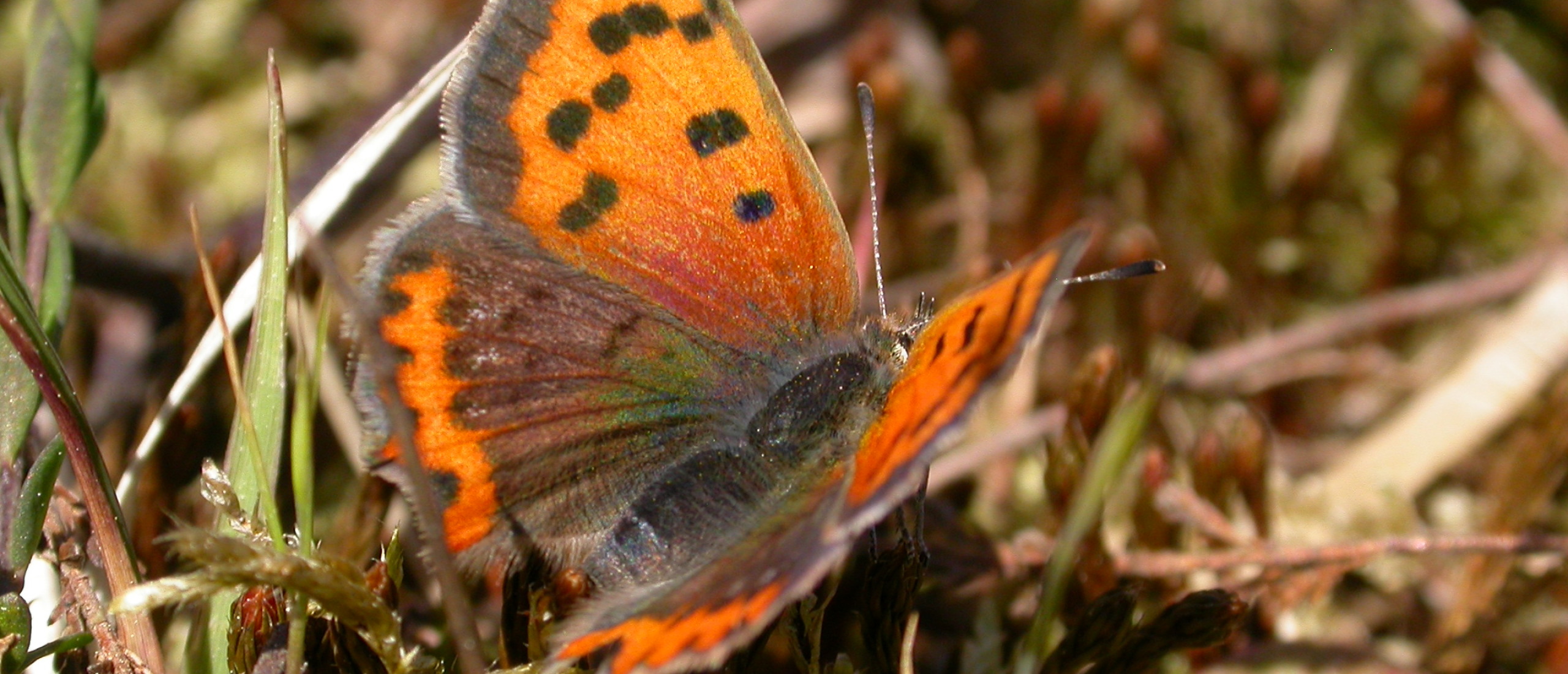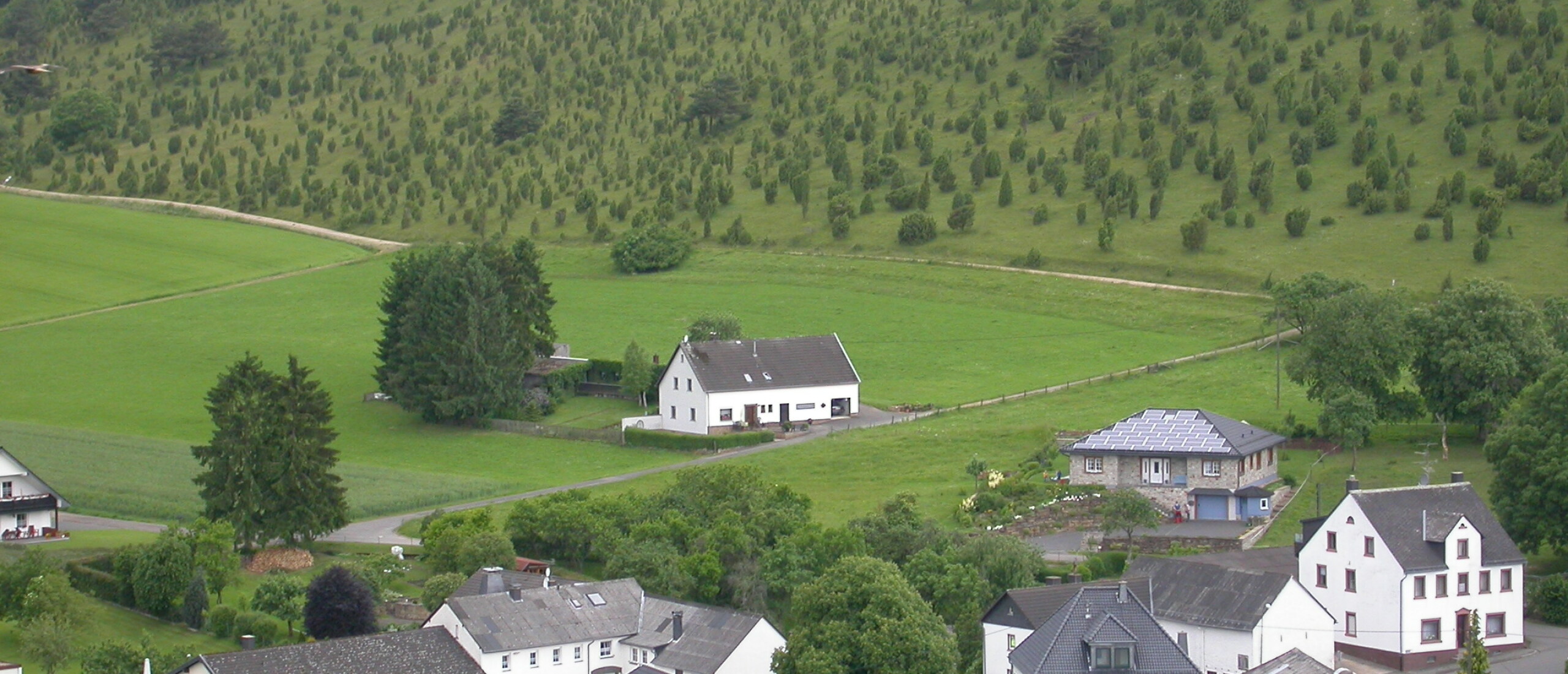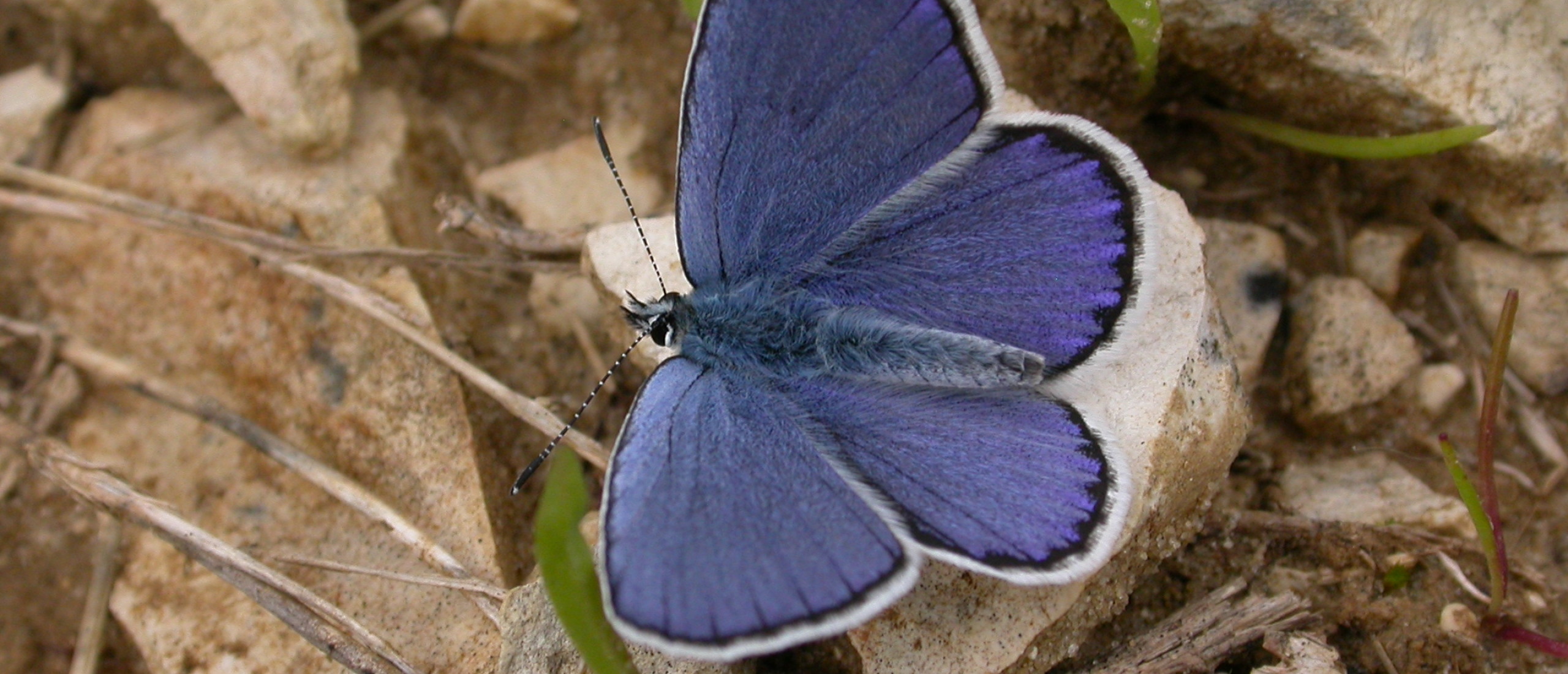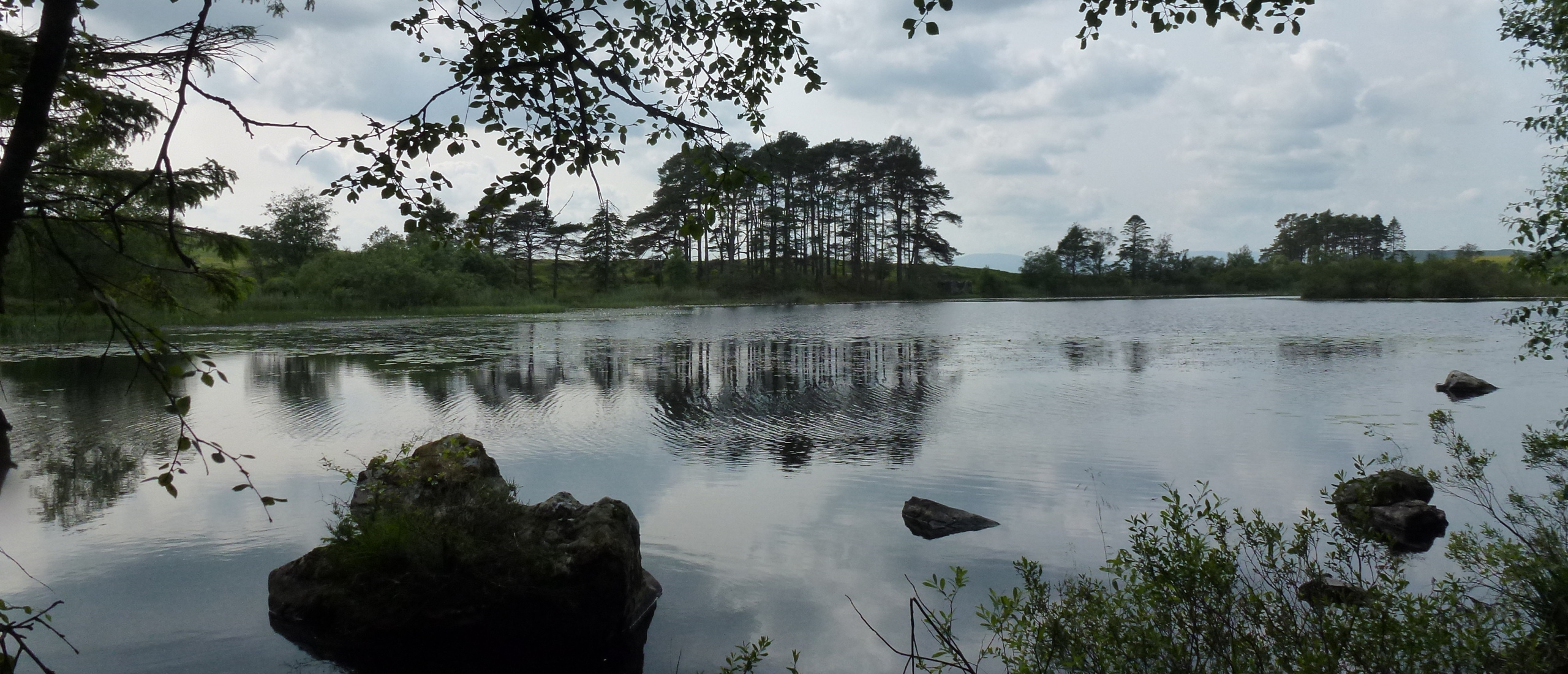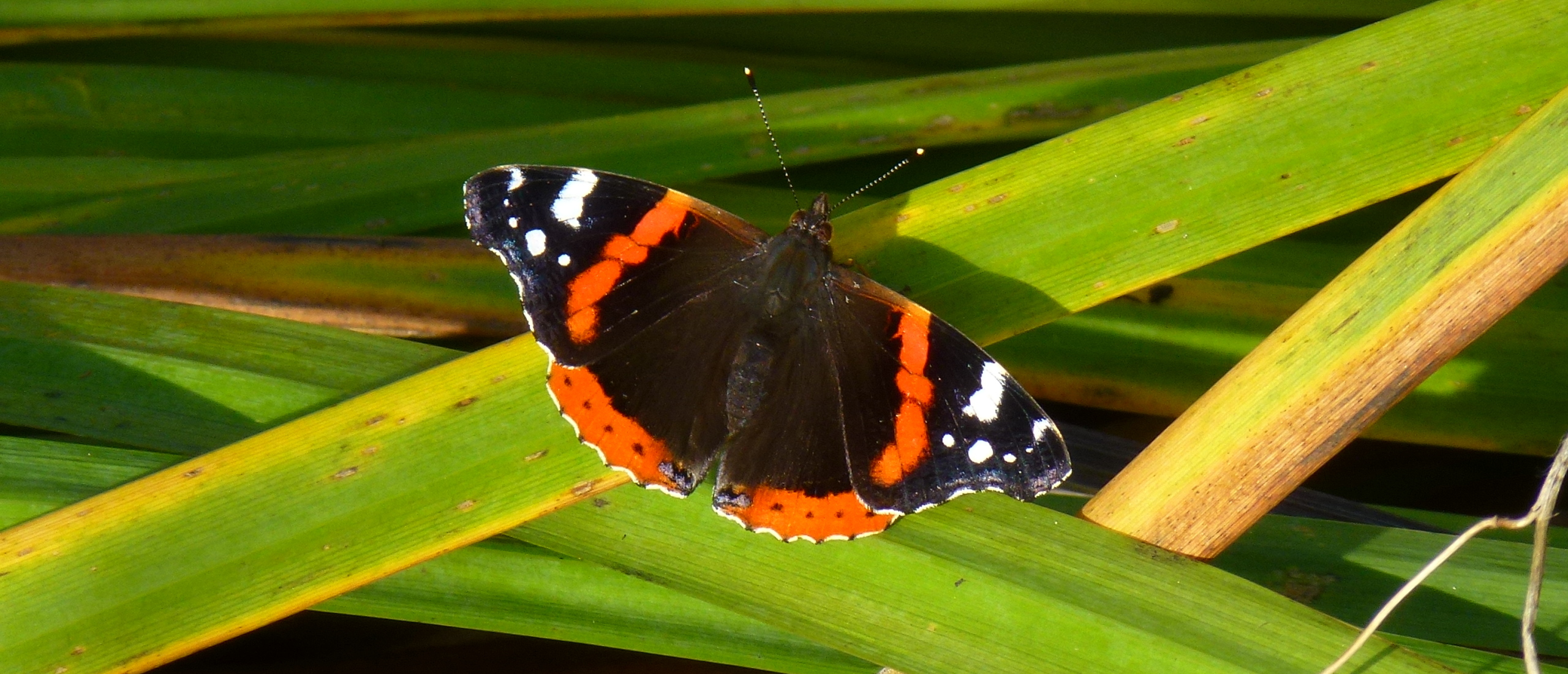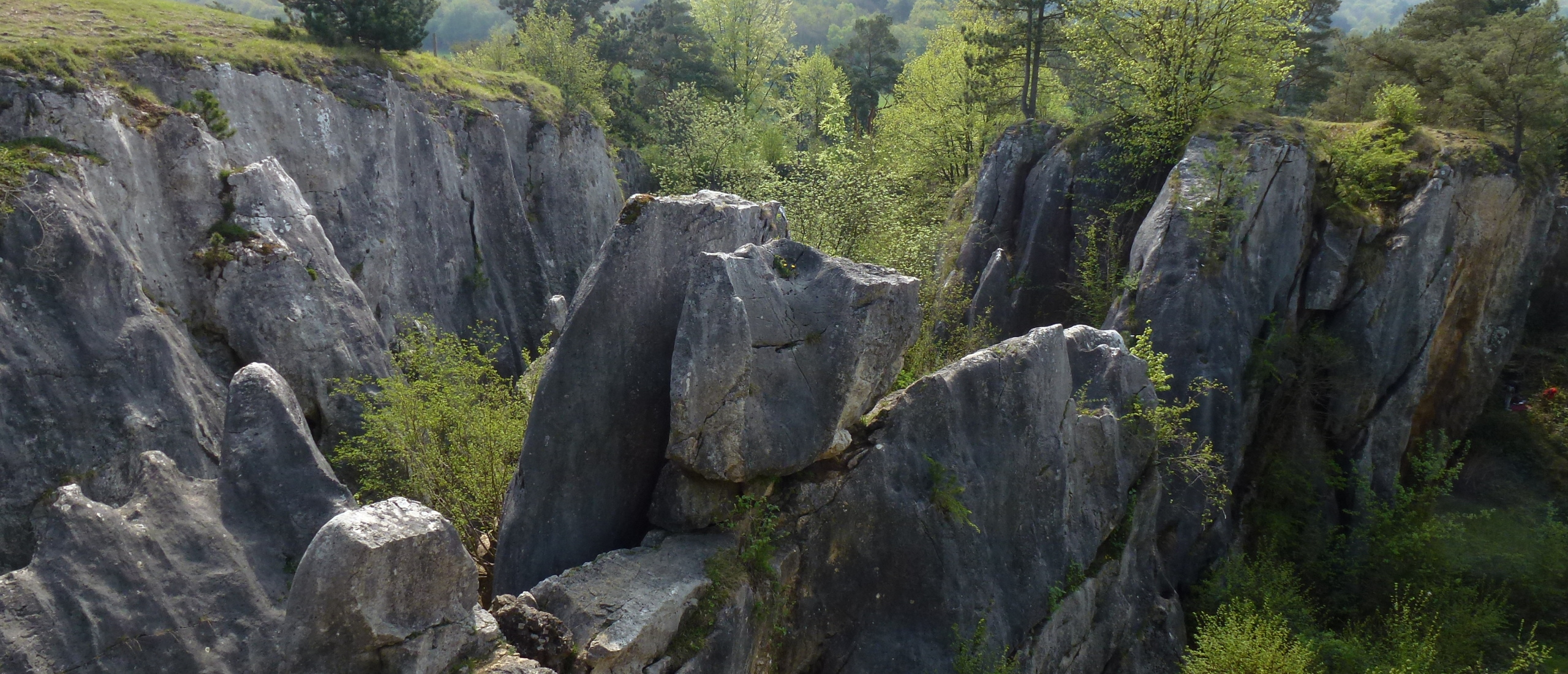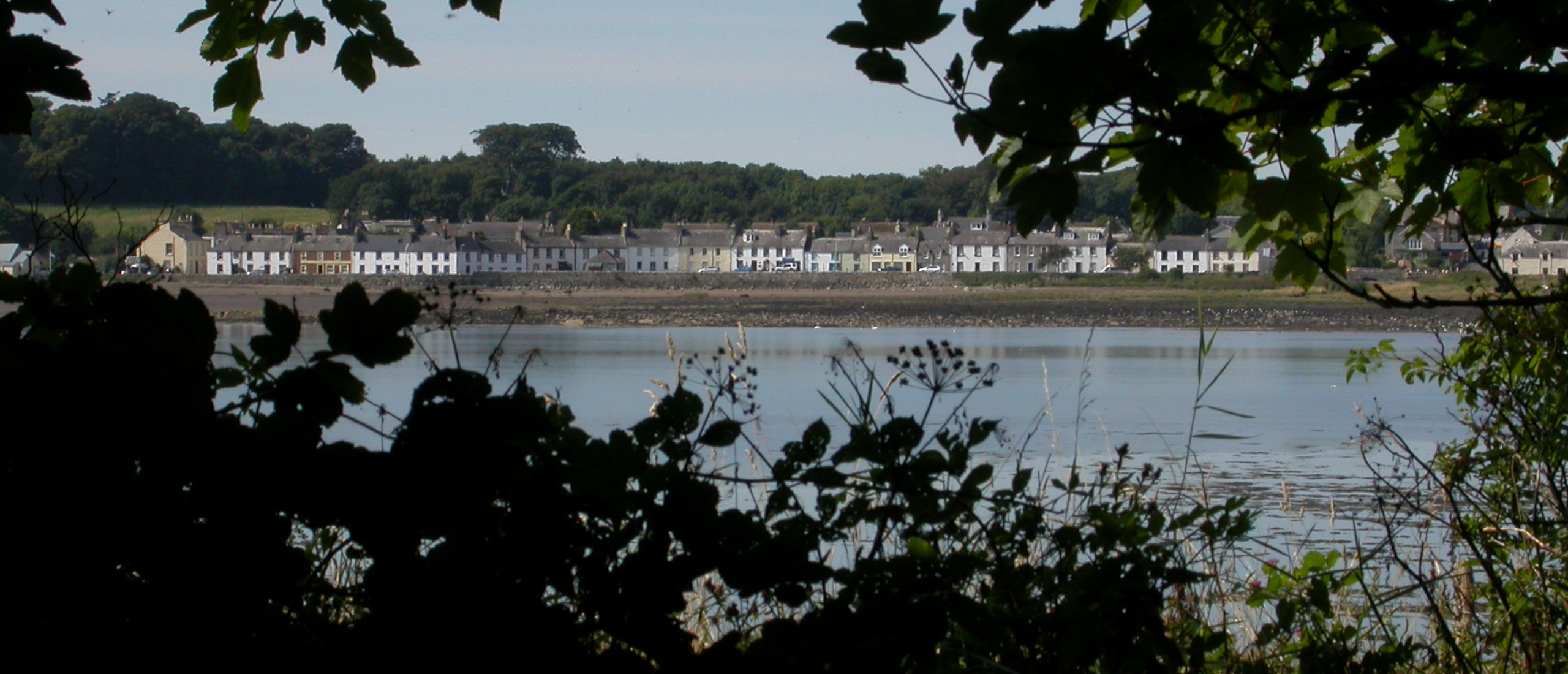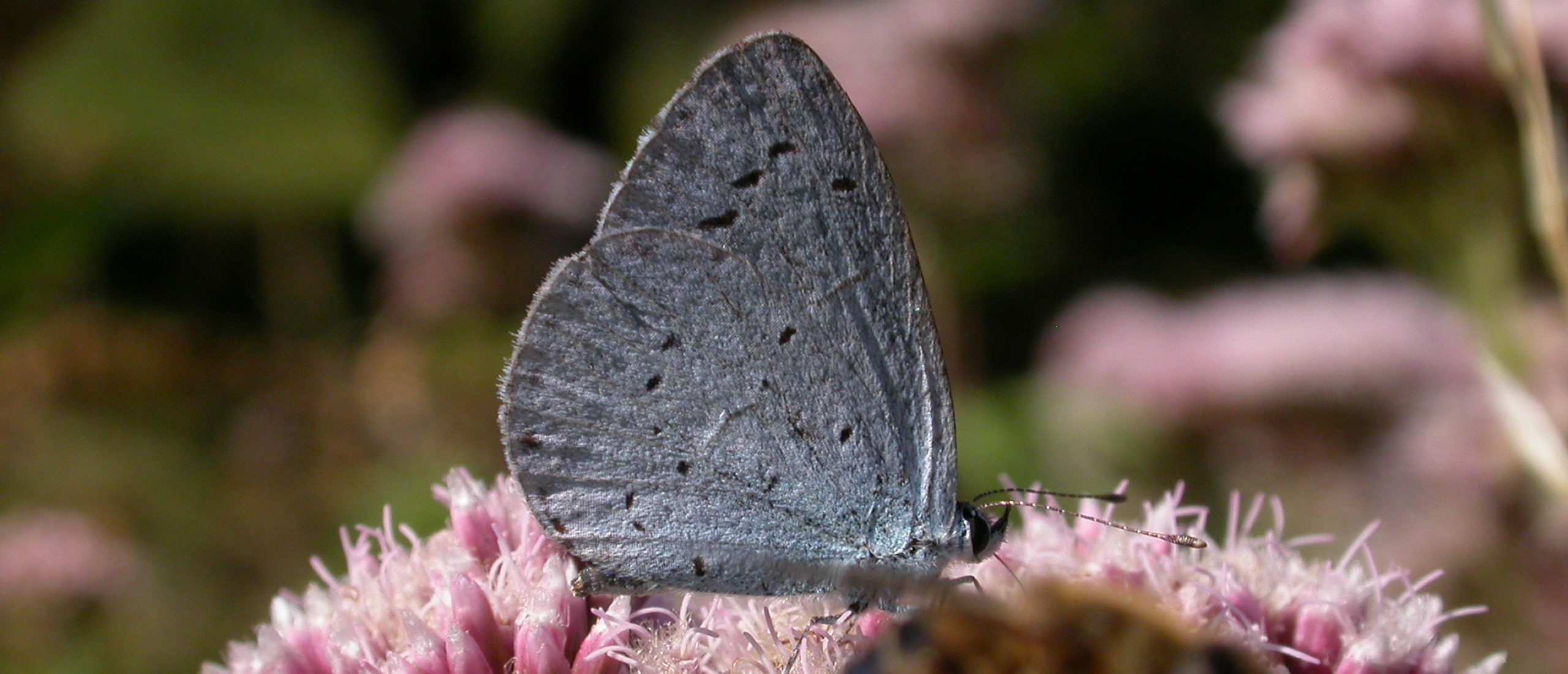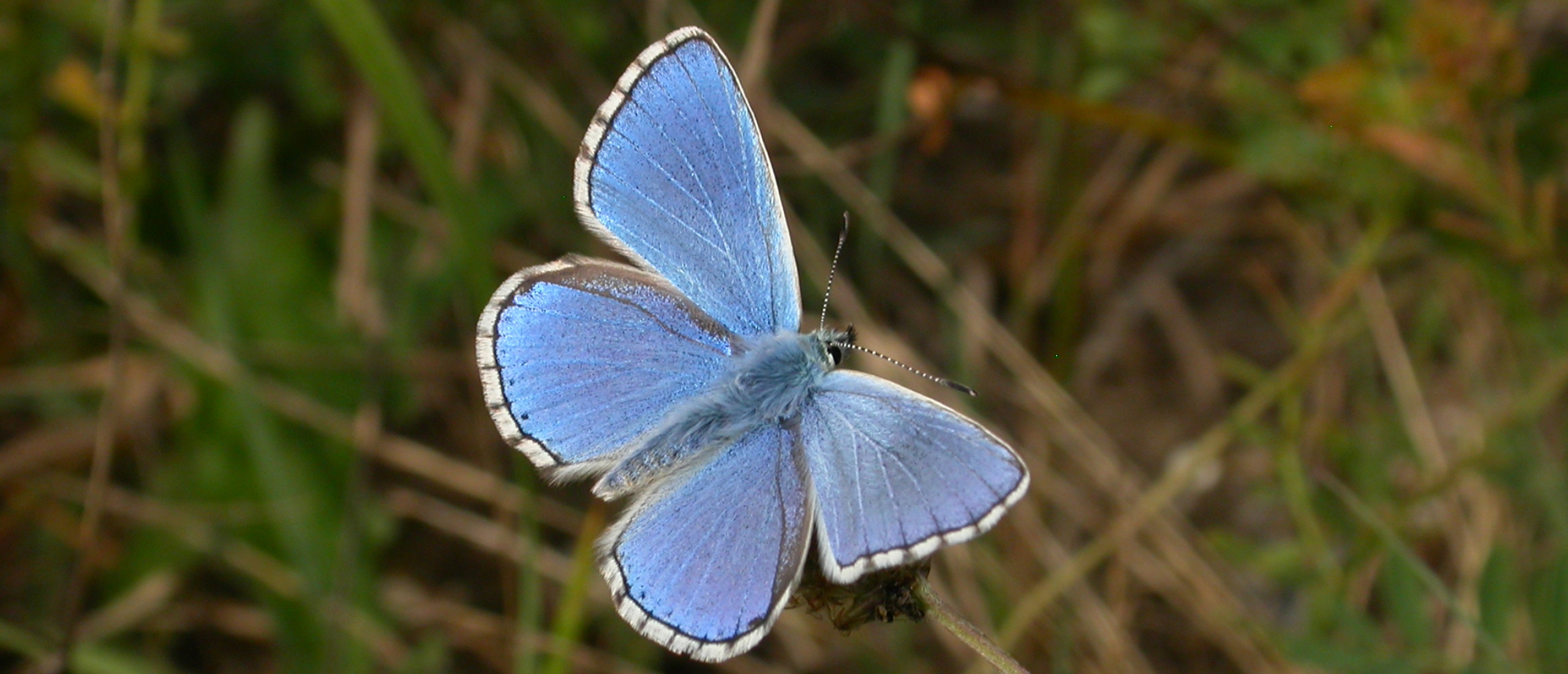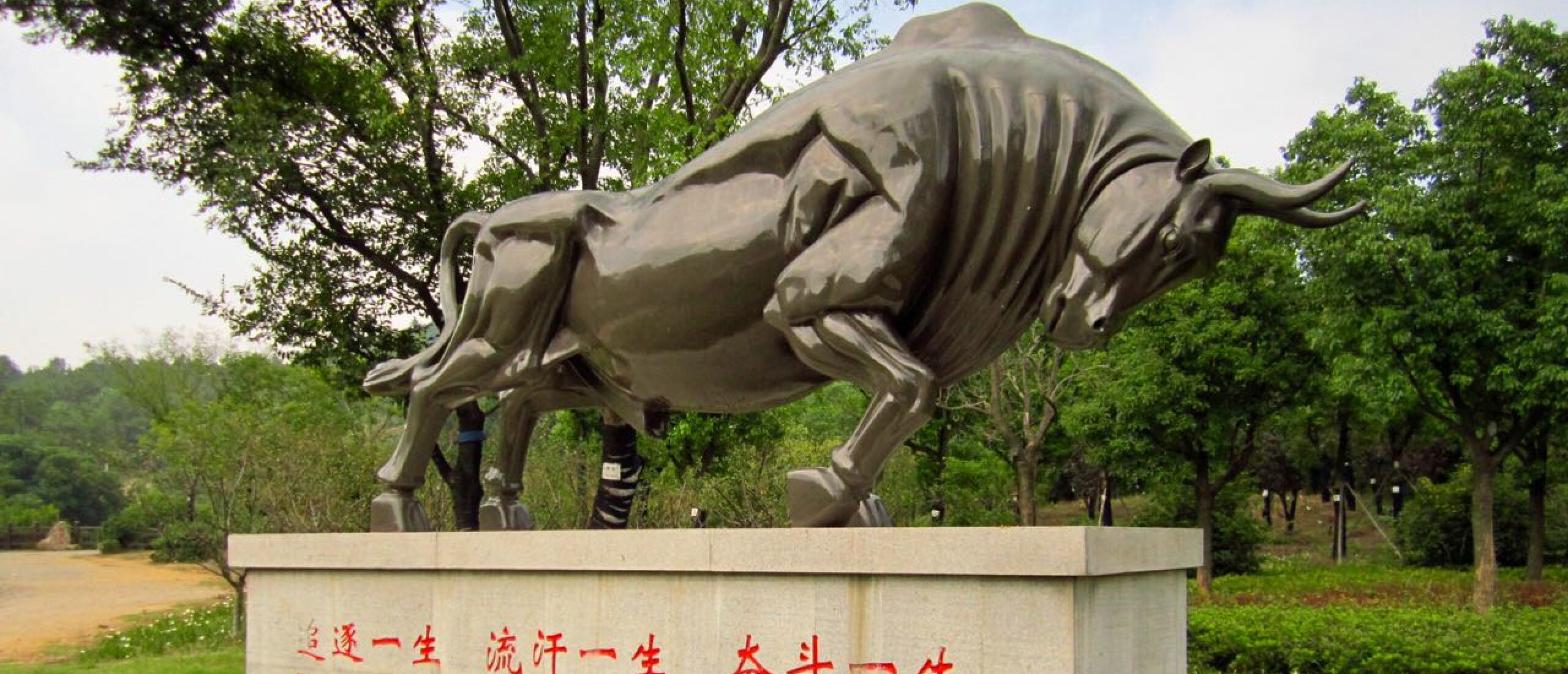
A final unexpected flurry of late autumn butterflies! This weekend has seen me enjoying a splendid finale to my butterfly year (at least I assume this must be the end), and I even boosted up my total by one, raising my list to 78 species, only to then find that I had double-counted one, which disappointingly brought me back down to 77! I headed southwards to my usual haunts in northern France, where the weather was still warm, although only partly sunny, with quite a lot of cloud and some fog. On the Friday I paid a visit to the Monts de Baives, an oasis of calcarious grassland and bushy scrubland only a couple of kilometres from the Belgian border. Here there were several Large Whites, Pieris brassicae, Small Whites, Pieris rapae, and Green-veined Whites, Pieris napi, all enjoying the autumn flowerheads of Knapweed, Centaurea nigra. There was a fine show of Autumn Crocuses, Colchicum autumnale, but these did not seem to be attractive to the butterflies at all.
 A female Large White nectaring on Knapweed
A female Large White nectaring on Knapweed
Among the whites were at least six Clouded Yellows, Colias croceus, including one mating pair that allowed an extremely close approach. Clouded Yellows are migrants that are numerous in some years and virtually absent in others; this has been a good year for them in northern France, Belgium and the Netherlands.
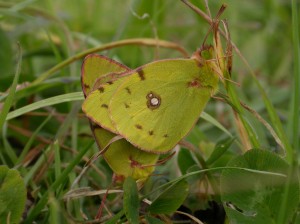 A mating pair of Clouded Yellows
A mating pair of Clouded Yellows
The slight chill in the air rendered these normally extremely active butterflies more confiding than usual, and I took full advantage of this in order to obtain several shots of them as they rested in the grass.
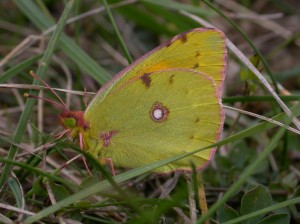 The normally wary Clouded Yellows allowed close-up photography due to the chill in the air
The normally wary Clouded Yellows allowed close-up photography due to the chill in the air
After a particularly long session, during which I took comparative shots with my new Sigma 17-70 Macro lens on my Nikon D70s, my Panasonic Lumix, my Samsung Galaxy smartphone and my ancient Nikon Coolpix 4500, and found that still the Coolpix is the clearest, what I had assumed to be a Clouded Yellow suddenly got up and flew off, revealing itself to be species number 78 for the year, a Pale Clouded Yellow, Colias hyale! I basked in this misconception until the evening, when I found in my notebook that I had double-counted Large White earlier in the year, so I reluctantly had to lower my score back to 77. It was nonetheless a bonus to add this species, which is also a migrant, but even less predictable in its occurrence than its darker cousin the Clouded Yellow.
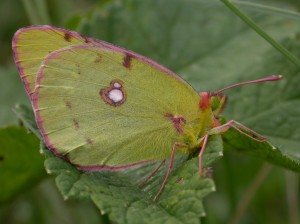 The Pale Clouded Yellow, which only revealed its identity when it flew away
The Pale Clouded Yellow, which only revealed its identity when it flew away
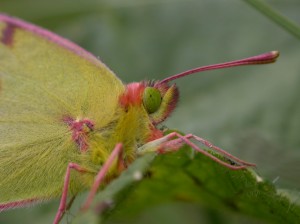 A close-up of the Pale Clouded Yellow's face, showing its remarkable pink hairs
A close-up of the Pale Clouded Yellow's face, showing its remarkable pink hairs
A pale sandy shape flitting around around turned out to be a late Painted Lady, Vanessa cardui, which may well have been on its southward migration. This has not been a particularly good Painted Lady year, and I have seen perhaps only ten in the whole summer. This one was looking a little the worse for wear as it stocked up on energy-giving nectar before moving on southwards. Two or three late and very tired-looking Speckled Woods, Pararge aegeria, were also to be seen here.
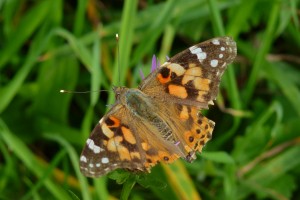 The Painted Lady, looking a little tattered as it stocked up on nectar
The Painted Lady, looking a little tattered as it stocked up on nectar
While taking a short drive along the nearby country lanes, an orangey-brown butterfly suddenly crossed the road in front of the car. Unable to stop immediately, I was actually able to see in the rear-view mirror precisely where it landed in a hedge! I jumped out, and was delighted to find that it was my third Brown Hairstreak, Thecla betulae, of the year. It posed on a drooping branch of wild rose, but by the time I had grabbed a camera, it had flown off and could not be relocated. Nonetheless, this excellent sighting spurred me to return to the same location the following afternoon, and I promptly found another, also spotted crossing the road in front of the moving car; sadly, it too disappeared before I could obtain a shot. I soured the hedges on either side of the road, and although I did not get another view of the butterfly, I was delighted to find a beautiful pearly-white Brown Hairstreak egg, placed neatly as they always are in the V of a fresh sprig of Sloe, Prunus spinosa. Counting the eggs is a more reliable method of assessing Brown Hairstreak numbers than searching for the highly mobile and often elusive adult butterflies.
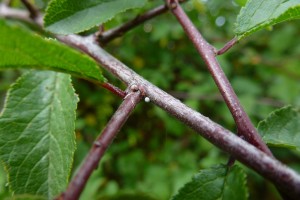 The pearly-white Brown Hairstreak egg, placed as always in the V of a Sloe branch
The pearly-white Brown Hairstreak egg, placed as always in the V of a Sloe branch
If you click on the image to make it larger, and then once again, you will see the extraordinary pocked surface of this jewel-like egg. Back home, rotting plums in the garden were attracting numerous Red Admirals, Vanessa atalanta, and at least two Commas, Polygonia c-album, which were delighting in the slightly fermented juicy fruit, sharing their prize with a fearsome-looking but actually rather docile Hornet, Vespa crabro, which also allowed a close approach.
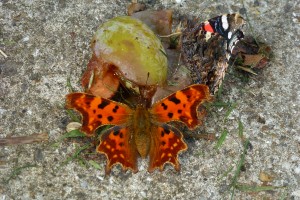 A Comma and a Red Admiral gorging themselves on the rotting plums
A Comma and a Red Admiral gorging themselves on the rotting plums
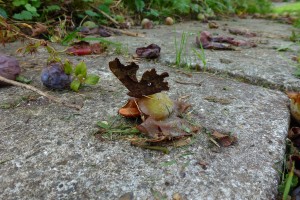 A Comma, showing its extraordinary wing shape and the characteristic white comma mark
A Comma, showing its extraordinary wing shape and the characteristic white comma mark
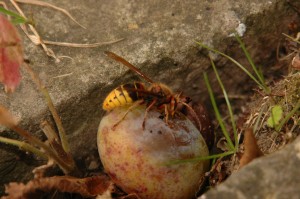 A Hornet was also attracted by the fallen plums
A Hornet was also attracted by the fallen plums
So by the end of what promises to be my last butterfly weekend of 2013, I had seen a total of ten species, and my final overall total for the year remained at 77. Is this the end? Could there be any further surprises? Highly unlikely, surely!


